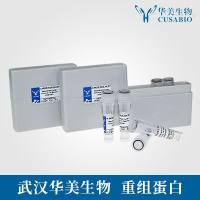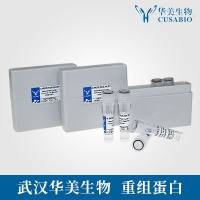ChIP protocol for X. laevis Lens1/FoxE3 enhancer
互联网
(1) Remove vitelline membrane from stage 21-23 embryos (n = 300). Collect head tissues (about anterior 1/4 or 1/3 of the embryo) in 1x MBS.
(2) Fix the tissues in 0.5x MBS/1% formaldehyde (4-5 ml in a screw cap glass vial) for 15 min at RT with horizontal rocking.
| 0.5x MBS | 10 ml | 20 ml | 30 ml |
| 37% formaldehyde | 270 µl | 540 µl | 810 µl |
(3) To stop the reaction, rinse fixed tissues once with 0.5x MBS/125 mM glycine, add fresh 0.5x MBS/125 mM glycine and incubate for 30 min at RT with horizontal rocking. Do not remove all solutions to rinse tissues; otherwise they may be broken by surface tension.
(4) Rinse tissues twice with 0.5x MBS at RT.
(5) Transfer tissues into a 1.5 ml microfuge tube using a wide-bore plastic pipette. Remove the MBS as much as possible.
(6) You may store the tissues at �80°C (use liquid nitrogen to freeze them).
(7) Add 0.5 ml of �SDS lysis buffer/1x proteinase inhibitor cocktail (2.5 µl of 200 x stock from Upstate EZ ChIP kit). Roughly dissociate heads by pipetting, and transfer them into a 2 ml dounce homogenizer. Total volume is ~700 µl.
|
�SDS lysis buffer
|
|
50 ml
|
| 50 mM Tris-HCl pH 8.0 | 1M stock | 2.5 ml |
| 10 mM EDTA | 0.5M stock | 1 ml |
| 150 mM NaCl | 5M stock | 1.5 ml |
| Fill up to a total volume of 50 ml with H2 O |
(8) Homogenize tissues on ice (10-12 strokes). Transfer the homogenate into a microfuge tube on ice.
(9) Sonicate the homogenate on ice (10 sec. pulse + 50 sec. break x 6 times, 20% amplitude with a small tip of Branson sonifier (Fisher Dismembranator Model 500)). This step releases chromatin DNA from cells without solubilizing yolk proteins that make high background, but does not make the length of chromatin DNA short enough for ChIP.
(10) Centrifuge for 20 min at 14000 rpm, 4°C. Recover supernatant. Do not take yolk proteins precipitated in the bottom of the tube.
(11) Add 55.6 µl of 10% SDS lysis buffer into 500 µl of supernatant (final 1% SDS). Mix gently. This step increases the SDS conc. in the sample to 1%, which is necessary to make the length of chromatin DNA short enough for ChIP (200 � 1000 bp) by sonication.
|
10% SDS lysis buffer
|
|
50 ml
|
| 50 mM Tris-HCl pH 8.0 | 1M stock | 2.5 ml |
| 10 mM EDTA | 0.5M stock | 1 ml |
| 150 mM NaCl | 5M stock | 1.5 ml |
| SDS | 5 g |
| Fill up to a total volume of 50 ml with H2 O |
(12) Sonicate again on ice (10 sec. pulse + 50 sec. break x 3 times, 20% amplitude with a small tip). Now the length of your chromatin DNA should be 200-1000 bp.
(13) Centrifuge for 20 min at 14000 rpm, 4°C. Recover supernatant. This is the soluble sheared chromatin fraction. This can be stored at �80°C.
(14) Aliquot 100 µl of the supernatants into 1.5 ml microfuge tubes, and add 900 µl of 150 mM NaCl ChIP Dilution buffer/1x proteinase inhibitors. This dilution decreases the SDS concentration in chromatin samples from 1% to 0.1% so that antibodies can work there.
| 150 mM NaCl ChIP Dilution buffer | 50 ml | |
| 16.7 mM Tris-HCl pH 8.0 | 1M stock | 835 µl |
| 150 mM NaCl | 5M stock | 1.5 ml |
| 1.2 mM EDTA | 0.5M stock | 120 µl |
| 1.1% Triton X-100 | 10% stock | 5.5 ml |
| 0.01% SDS | 10% stock | 50 µl |
| Fill up to a total volume of 50 ml with H2 O |
| Working solution | |
| 150 mM NaCl ChIP Dilution buffer | 5 ml |
| 200x proteinase inhibitor cocktail | 25 µl |
(15) Add 60 µl of Protein G agarose (50% slurry, preblocked, from EZ ChIP kit) into each chromatin sample.
(16) Incubate for 1 hour at 4°C with horizontal rocking. This step removes non-specific binding activities to agarose beads in chromatin samples prior to antibody reaction.
(17) Pellet the agarose beads by brief centrifugation (3000-5000 x g (ex. 6600 rpm at Eppendorf table top centrifuge) for 1 min)).
(18) Collect supernatants into new tubes. Remove 20 µl of the supernatant as Input (2%) and save it at 4°C. Later, DNA will be extracted from this “Input”, and its dilution series will be used to make a standard curve for qPCR.
(19) Add 5 µg of Otx2 antibody (Abcam ab21990, 16.7 µl (0.3 µg/µl)), or control rabbit IgG (5 µl (1.0 µg/µl) from EZ ChIP kit) into each chromatin sample.
(20) Incubate overnight at 4°C with horizontal rocking.
(21) Add 60 µl of Protein G agarose. Rock for 1 hour at 4°C.
(22) Pellet agarose by brief centrifugation (3000-5000 x g (6600 rpm) for 1 min)), and remove supernatant (use gel loading tips to completely remove supernatant).
(23) Add 1 ml of ice-cold Low Salt Immune Complex Wash Buffer (EZ ChIP kit). Resuspend the packed agarose beads by gentle tapping. Rock for 5 min at 4°C.
(24) Centrifuge 6600 rpm for 1 min at 4°C. Remove the buffer.
(25) Add 1 ml of ice-cold High Salt Immune Complex Wash Buffer (EZ ChIP kit). Rock for 5 min at 4°C.
(26) Centrifuge 6600 rpm for 1 min at 4°C. Remove the buffer.
(27) Add 1 ml of ice-cold LiCl Immune Complex Wash Buffer (EZ ChIP kit). Rock for 5 min at 4°C.
(28) Centrifuge 6600 rpm for 1 min at 4°C. Remove supernatant.
(29) Add 1 ml of ice-cold TE Buffer (EZ ChIP kit). Rock for 5 min at 4°C.
(30) Centrifuge 6600 rpm for 1 min at 4°C. Remove supernatant.
(31) Add 1 ml of ice-cold TE Buffer (EZ ChIP kit). Rock for 5 min at 4°C.
(32) Centrifuge 6600 rpm for 1 min at 4°C. Remove supernatant. Keep samples on ice.
(33) Prepare Elution Buffer (200 µl per sample).
| Elution Buffer | 200 µl | 1000 µl |
| H2 O | 168 µl | 840 µl |
| 20% SDS | 10 µl | 50 µl |
| 1M NaHCO3 | 20 µl | 100 µl |
| 1M DTT | 2 µl | 10 µl |
The original Elution Buffer in the kit does not contain DTT, but I include it to increase recovery of DNA.
DTT breaks down S-S bonds of antibodies.
(34) For Input tubes, add 200 µl of Elution Buffer and set aside at RT.
(35) Add 100 µl of Elution Buffer to each tube containing the antibody/agarose complex. Mix by flicking tube gently.
(36) Incubate at RT for 15 min.
(37) Pellet agarose by brief centrifugation (3000-5000 x g (6600 rpm) for 1 min), and collect supernatant into new tubes.
(38) Repeat steps 35-37 and combine eluates (total volume = 200 µl).
(39) To all tubes (IPs and Inputs) add 8 µl of 5M NaCl (EZ ChIP kit) and incubate at 65°C for overnight to reverse the DNA-protein crosslinks.
(40) To all tubes, add 1 µl of RNaseA (EZ ChIP kit) and incubate for 30 min at 37°C.
(41) Add 4 µl 0.5M EDTA, 8 µl 1M Tris-HCl, and 1 µl Proteinase K (EZ ChIP kit) and incubate at 45°C for 2 hours.
(42) Purify DNA using Spin columns in EZ ChIP kit or Qiagen PCR purification kit.
(43) The purified DNA (50 µl) is stored at �20°C, or immediately used for qPCR.
qPCR analysis of enriched DNA (real-time PCR analysis)
Primer design for qPCR
It is convenient to use “qPCR” settings in Primer3Plus ( http://www.bioinformatics.nl/cgi-bin/primer3plus/primer3plus.cgi ).
XlEF-1a-F (Tm 60.0) ATGCACCATGAAGCCCTTAC
XlEF-1a-R (Tm 60.2) CTTCCATTGGTGGGTCATTC
product length 130 bp (exon sequence)
XlTH/bZIP-F (Tm 59.8) TTGGGGAGTTGTGAGCAAG
XlTH/bZIP-R (Tm 60.2) AATGAGGCTGAGCATTCACC
product length 111 bp (promoter sequence)
XlLens1-F (Tm 59.6) AGGTTTAAGGGTGACCTGCTC
XlLens1-R (Tm 59.7) TGTGTGGGATTTCTGCAGTC
product length 79 bp (enhancer sequence)
XlLens1 cds-F (Tm 58.8) TGAATGGGAACCTAGGGAAC
XlLens1 cds-R (Tm 59.7) AGGTTAGGTTGGAAGACACAGC
product length 138 bp (exon sequence)
Real-time PCR system
Bio-Rad MyiQ thermal cycler and iQ SYBR Green Supermix (#170-8882)
Preparation of PCR reactions
|
One reaction
|
20 µl |
|
iQ SYBR Green Super Mix
|
10 µl |
|
5'' primer (15 pmol/µl)
|
0.4 µl |
|
3'' primer (15 pmol/µl)
|
0.4 µl |
|
H2 O
|
7.2 µl |
|
DNA
|
2 µl |
Use dilution series of input DNA as standard curve templates.
(500, 100, 20, 4 pg/µl)
Duplicate PCR reactions for standard curve templates, and triplicate for test samples.
PCR cycle settings
Cycle 1: ( 1X)
Step 1: 95.0ºC for 03:00
Cycle 2: ( 50X)
Step 1: 95.0ºC for 00:30
Step 2: 59.5ºC for 00:30
Data collection and real-time analysis enabled.
Step 3: 72.0ºC for 00:30
Cycle 3: ( 80X)
Step 1: 55.0ºC for 00:10
Increase setpoint temperature after cycle 2 by 0.5ºC
Melt curve data collection and analysis enabled.
For XlLens1 cds primer set, step 2 may be 57.0 ºC.









